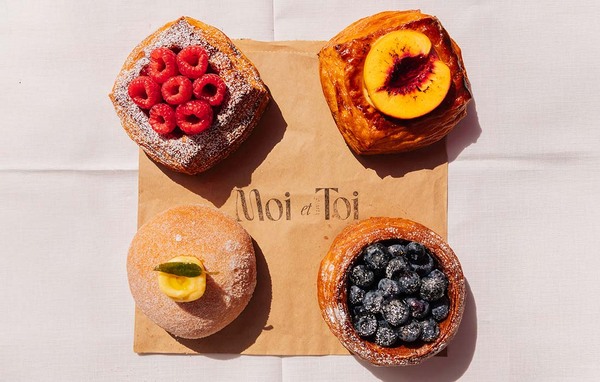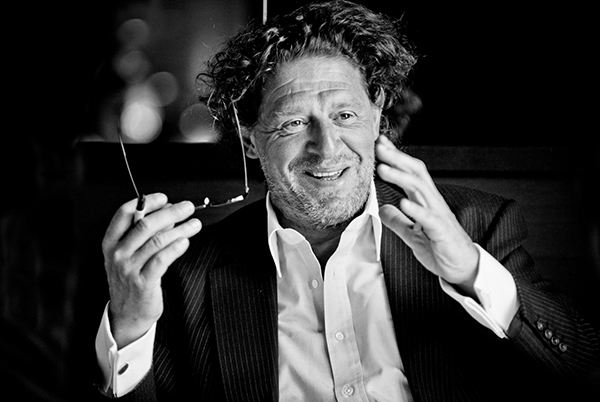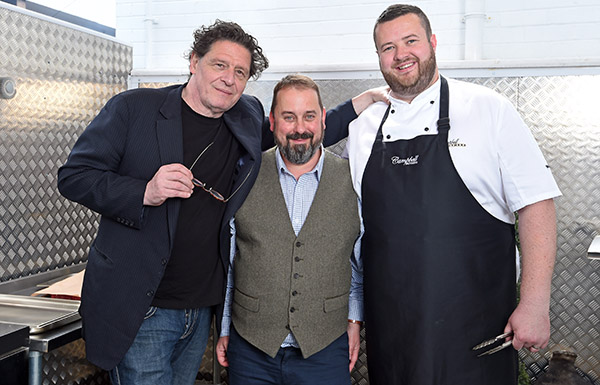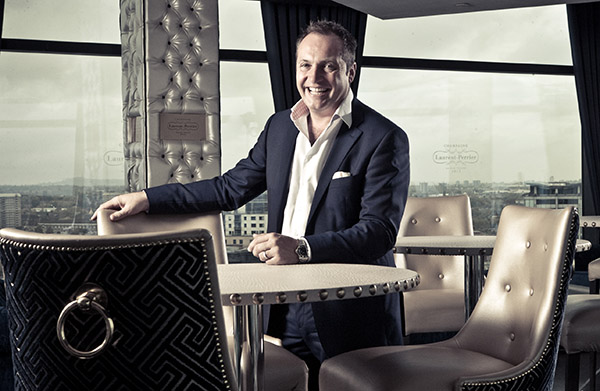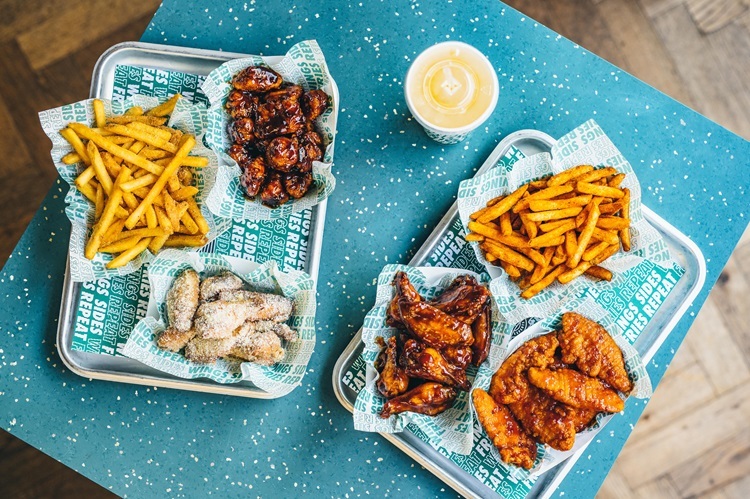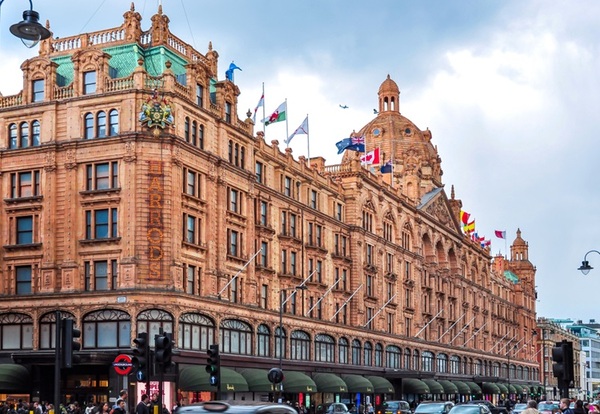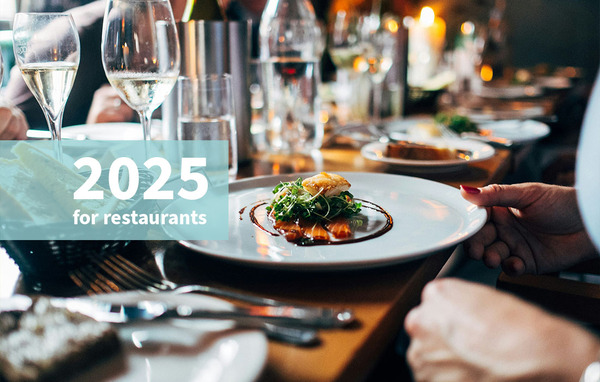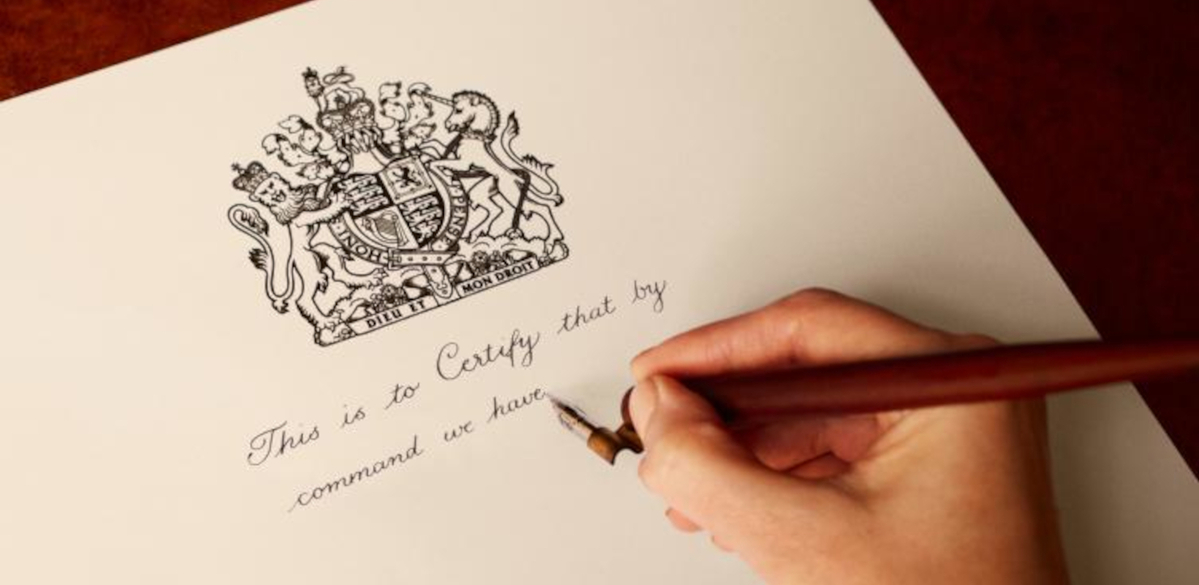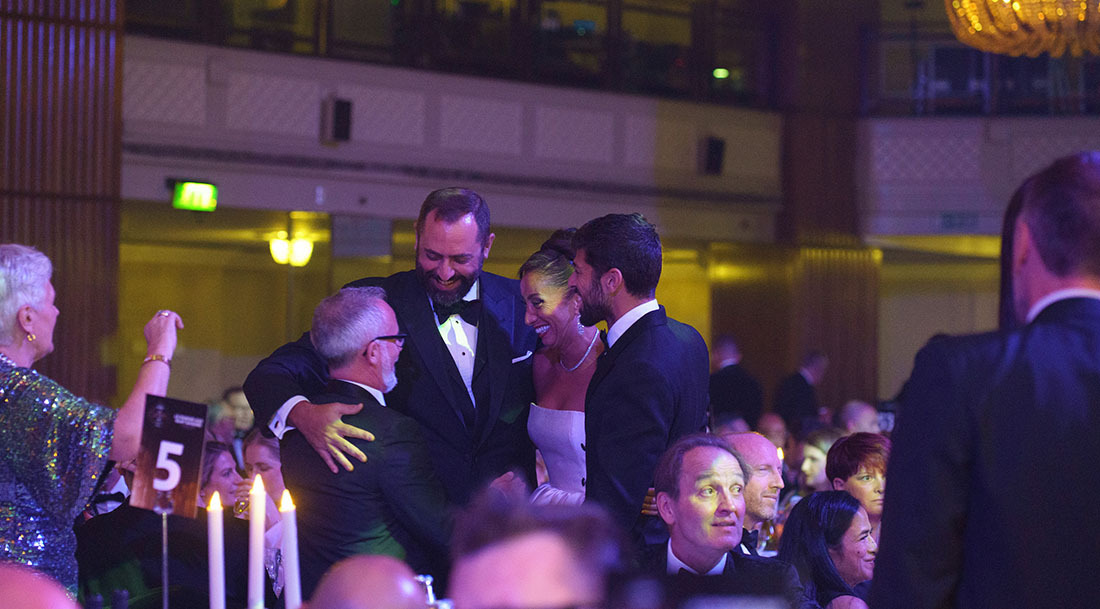Marco Pierre White: the future of hospitality is ‘affordable glamour'
Marco Pierre White is equally one of the most notorious and revered figures in hospitality, who has maintained enigmatic status through the roll out of his restaurant brands. He explains his philosophy for achieving perfection to Emma Lake
Almost two decades have passed since Marco Pierre White sensationally handed back his three Michelin stars and hung his apron up on a kitchen career that had seen him reach the summit of his profession and gain a notoriety that no chef has since matched.
These days, White says he does "only things I enjoy", such as: "I like to spend time with my family, on the riverbank, in the English countryside. Simple as that."
The intervening years have also seen him team up with Nick Taplin to open a number of restaurants in hotels, before franchise venture Black and White Hospitality was established in 2013. The group owns the rights to eight brands bearing the chef's name and it plans to reach 60 sites this year.
Now, White speaks of "affordable glamour" and creating an environment that will see customers returning weekly or monthly. He says: "The future is casual dining. Not every Michelin-starred restaurant will be full tonight. As the great Nico Ladenis once said to me, ‘you have one quiet night in a restaurant and you've lost your profit'."
Rolling out a restaurant, particularly through franchise agreements, is a complex task, and in recent times many operators have been accused of failing to maintain a consistent standard across their sites â" possibly a particular concern when itâs your name above the door.
White says: âItâs about infrastructure. I donât think a lot of them have infrastructure. A lot of the chains are run by accountants, not hoteliers, restaurateurs and chefs. Thatâs where I think the difference is. We have a massive infrastructure â" we have 40 staff and they visit every restaurant, every week.â
On the day of the interview, The Caterer joins White, Black and White Hospitality founder, chairman and chief executive, Taplin, and executive head chef Jason Everett on a visit to meat supplier Campbell Brothers just outside Edinburgh, during which the team examine and cook up a number of cuts.
White adds: âPart of your infrastructure has got to be the people with whom you work. Campbells has got distribution; they have consistency. It would be impossible for us to work with 50 or 60 individual butchers â" the complication of managing it would be extraordinary. Say I have a steak in Glasgow, Cardiff, Bristol or Birmingham, it has to be exactly the same. You have to be consistent.â
Later in the interview, White returns to the subject of infrastructure and systems, explaining that it was this that helped achieve the consistency that saw him awarded three Michelin stars.
Stellar standards
Whiteâs own journey to three stars began when, at the age of 16, he joined the kitchen of the Hotel St George in Harrogate. He would go on to the Box Tree in Ilkley before arriving in London at the door of Albert Rouxâs office to ask for a job. He worked under Roux at Le Gavroche before moving on to work with Pierre Koffmann, Ladenis and Raymond Blanc.
In January 1986 the chef opened Harveys, his first London restaurant. He gained his first Michelin star the following year and his second in 1988. It would be seven years, having moved on to Restaurant Marco Pierre White at the Hyde Park hotel (now the Mandarin Oriental), before he would gain his third.
To reach a three-star standard, White says: âYou have to be brutally honest with yourself; you think âthatâs three stars; thatâs not three starsâ. You have to question everything you do and why youâre doing it. Itâs about knowing what three stars is â" thatâs the secret. When you understand what three stars represents, you can work towards it. If youâre not going to be brutally honest with yourself, then youâll never achieve it.â
He says he no longer understands Michelin and suggests that a desire to gain headlines (not to mention sell tyres) has seen an influx in the number of stars handed out and some questionable decisions.
The chef explains: âWhen Derek Brown was the head inspector of the UK and Monsieur [Bernard] Naegellen was the head inspector in France and really the boss of Europe, then I understood what Michelin was and what it represented. Naegellen said it took a chef eight to 10 years to win three stars; you had to show consistency over a period of time for them to have the confidence to give you three stars.â
White points to Michael Steinbergerâs book, Au Revoir To All That, in which former inspector Pascal Remy tells the author that âMichelinâs goal is to get people talking about Michelin,â pointing to the first Tokyo guide published in 1997, in which more stars were given in the Japanese capital than to any other city (191 stars to the 150 restaurants listed).
White says: âIf I were the chief executive of Michelin, I would do the same and throw stars all over. Giving hawker stalls in Singapore Michelin stars â" thatâs big news. Taking the star away from Gordon Ramsay at Claridgeâs [in 2010] â" I think it was the front page of The Times. Someone asked me my opinion and I said âwhat, theyâre telling me every one-Michelin-starred restaurant in France is serving better food than Gordon at Claridgeâs? Not trueâ.â
Whiteâs ambition as a young chef was to gain three Michelin stars and five red knives and forks. But, it was not long after achieving this aim that he walked away from the kitchen.
He explains: âWhy did I retire? Because Iâd realised my dream. In January 1998 I realised my dream. I never wanted to live a lie and pretend Iâm in the kitchen when Iâm not, because the world that I came from was Escoffierâs world. A chefâs position was to be in his kitchen at every single service. I was there from 7am to midnight six days a week. I couldnât live a lie; I couldnât pretend that I cooked when I donât cook.â
It was at Harveys that White came to the attention of the general public, particularly as tales spread of outbursts both front and back of house. The publication of White Heat in 1990, with its stark black and white photography of White in the kitchen, saw him dubbed âthe first rock ânâ roll chefâ.
On the 25th anniversary of its publication, those who followed him into the industry queued up to explain how the book had lured them into hospitality. The new edition also gave further insight into the coalface of the Harveys kitchen. In one instance after complaining about the heat a chef had his whites sliced open with a carving knife to provide âventilationâ. The complainer was Black and Whiteâs executive head chef Everett.
When asked about his legacy and influence on the industry, White immediately jumps in, saying ânone whatsoeverâ, adding âIâm not part of the industryâ and âI donât mix with the industryâ. He goes on to say that if it was not for Black and White and Campbells, he would not be giving the interview.
Alongside tempting many into the kitchen, White, along with Gordon Ramsay, who worked under him at Harveys, is often mentioned in discussions around kitchen cultures and the drive away from the macho.
The chef acknowledges that his approach may not have been âconventionalâ, but he is not overly conciliatory, suggesting the legend has overshadowed what was a busy restaurant striving for the best during service.
He says: âMost of my reputation is a product of exaggeration and ignorance. If I was that person, would I have gone on to win three stars in Michelin? Did I ask customers to leave? Yes, I did, because they were rude to the staff or they were swearing or over-loud. That impacts on the next table of people. You ask them to refrain from swearing and be quiet, because a restaurant is not just one table. Harveys was 15 tables and you canât have one table dominating. I once asked a table of five City boys to leave. I walked them to the door and when I walked back in, the entire restaurant applauded me.
âDid I get angry with customers? Yes, I did. Did I scream? Yes, I did. Did I swear? Yes, I did. But letâs not forget: service is service â" itâs not personal. That was the first thing I learned about service on 20 March 1978. I asked my chef de partie âWhat does that mean?â He said: âThe chef will scream and swear and might throw his towel at you. Just remember itâs not personal, itâs serviceâ.
âFood has to be served hot. In service you donât say âBrian, can I have two steaks when youâve got a moment please?â. Itâs not like that. If I had to send a table of six, eight, 10, that table has to come together within a 15-second window because all plates went together. Food has to be served hot because it tastes better.
âIâm not saying my methods were conventional, but they achieved results. My job when I was a chef was to make sure that every chef, by the time they left me, was way better than when they started with me. When someone puts their career into your hands, you have a duty and responsibility to bring the best out of them. Letâs not forget: it wasnât a job, it was a way of life.â
White on fine dining âI donât understand when you go to a fine dining restaurant and they tell you what youâre eating and how many courses youâre eating. Then you receive little canapés on a plate, which tend to be lukewarm, and youâre told how to eat it and then 30 seconds later they ask, âdid you enjoy it?â. I donât go to dinner to have dinner with the waiter.
âI like to walk into a restaurant and smell the food. I like very honest, very straightforward food and I like my food hot.
âGenerosity should be your presentation, because then you have plate presence. When you have all these splashes of sauce â" how many times do you find the sauce has gone and youâve still got protein left? You have a plain piece of meat or fish because theyâve not taken into consideration the ratio of sauce to protein; the ratio of garnish to the amount of protein.
âToo much emphasis has gone on the presentation. Thatâs why the food is tepid, not hot. Thatâs why thereâs no scent of food in the room, because itâs not hot.â
He adds: âThe more you do to food, the more you take away. The more components you put on a plate, the less chance you have of achieving perfection.â
Nick Taplin, chief executive Black and White Hospitality
When Nick Taplin was introduced to Marco Pierre White, as an owner and operator of hotels, he was looking for an answer to his restaurant problem.
He had found that two-AA-rosette restaurants were attracting tables of two celebrating occasions or groups of businessmen. He says the result was disjointed and somewhat sterile environments and a lack of regular returning custom.
Taplin initially opened three Marco Pierre White restaurants as a franchisee. Three more followed, along with many phone calls from fellow hoteliers hoping White could be the answer to their own difficulties.
In 2013 the pair cemented their relationship and Taplin became chief executive and chairman of Black and White Hospitality, which has continued to expand and is aiming to reach 60 sites this year.
It now has eight concepts, with the potential for more to follow. Taplin explains: âAffordable glamour has become a bit of a strapline for us, because it says a lot about what we do. Weâre not trying to serve three-Michelin-starred food. Weâre trying to sell a night out and something thatâs affordable, so people can come more than twice a year, as well as being something that works for the guests of the hotel.
âItâs giving that whole experience. We sold more than £25m worth of food and drink last year; on Valentineâs night we served 15,000 dinners. To do that is quite incredible.â
Taplin says the group will grow as âbig as it can takeâ. Some cities already have multiple White offerings across the eight brands; however, Taplin says they will not make direct competition by, for example, opening a steakhouse in the vicinity of another.
While the group supplies the expertise, picking the right partner is important. Taplin explains: âItâs not just about them picking us; we have to pick them as well. From the day we start the contract we couldnât be more aligned. Itâs important we take someone with us on that journey who is committed, whether itâs a hotel group, management company or operating company.â
Marco Pierre Whiteâs brands
Marco Pierre White Steakhouse Bar & Grill The restaurant uses local produce, served alongside a cocktail offering, delivering the groupâs âaffordable glamourâ.
Wheelerâs of St Jamesâs Oyster Bar & Grill Room The Oyster Bar & Grill Room looks to build on the history of the St Jamesâs site, said to be the oldest fish brand
in the world.
Koffmann & Mr Whiteâs An English-French brasserie brand created as a collaboration between White and Pierre Koffmann, which launched in Bathâs Abbey hotel last year.
Mr Whiteâs English Chophouse The groupâs chophouses offer a menu centred around steaks, grills and chops, adding a little French flair to English classics.
Marcoâs New York Italian The New York Italian is a more casual all-day dining concept, positioned to appeal to families.
Wheelerâs Fish & Chips Wheelerâs Fish & Chips café is a casual restaurant and takeaway concept, showcasing Whiteâs take on traditional favourites.
Bardolino Pizzeria Bellini & Espresso Bar Named after the town where Whiteâs mother was born, Bardolino is a casual all-day offering inspired by traditional north Italian cuisine.
Marconi Coffee and Juice Bar Marconi serves coffee from the Italian Musetti brand alongside a range of juices, smoothies, yogurts, gelato and pastries.
The group has also worked with operators including Best Western, DoubleTree by Hilton, InterContinental Hotels Groupâs Holiday Inn and Hotel Indigo brands, Jurys Inn and Mercure.


